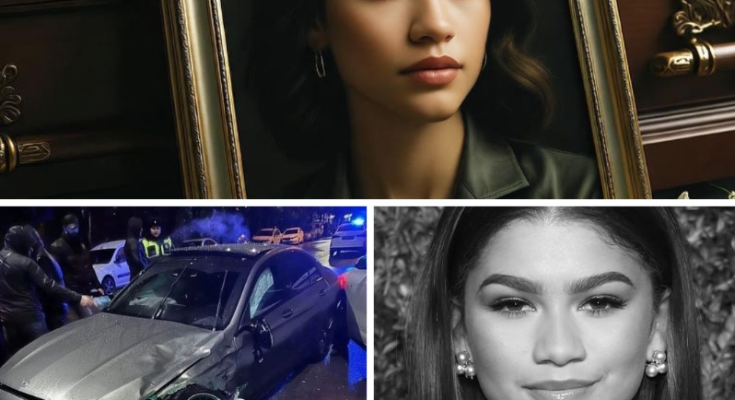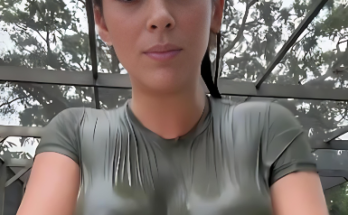
Zendaya “Fatal Crash” Claim: The Truth Behind the Viral Hoax
In the early hours of today, social media platforms began lighting up with a shocking headline: “15 minutes ago: Zendaya involved in fatal crash after vehicle skids on icy road — witnesses confirm high-speed impact, paramedics declare her dead.” The claim spread quickly, shared by countless pages and reposted in fan groups. However, after a thorough review of legitimate sources, the truth is clear: Zendaya is alive and well, and there is no evidence whatsoever that she has been involved in any kind of traffic accident.
How the Rumor Started
The false story appears to have originated from a clickbait website imitating the look of major news outlets. These sites typically publish sensational fake headlines to lure readers into clicking links that generate advertising revenue or redirect them to phishing pages. Within hours, screenshots of the supposed “breaking news” headline were circulating on platforms like Facebook, X (formerly Twitter), and TikTok, each post gathering thousands of reactions from alarmed fans.
Many who saw the posts noticed inconsistencies — grammatical errors, generic stock photos of damaged vehicles, and a complete lack of official confirmation from trusted sources. Still, the headline alone was enough to cause widespread confusion.
Official Silence and Fact-Checking
By midday, multiple entertainment journalists and fan-run news accounts had begun debunking the rumor. Reporters from Variety, TMZ, and People confirmed that Zendaya’s representatives did not report any accident or emergency. Furthermore, neither the Los Angeles Police Department nor California Highway Patrol released any public statement about a crash involving her vehicle.
Fact-checking organizations quickly addressed the hoax. Snopes, Lead Stories, and Reuters Fact Check — all of which monitor viral misinformation — emphasized that no credible evidence supports the claim, and that Zendaya’s verified social media accounts remain active, showing no sign of any tragedy.
Zendaya’s Recent Public Appearances
Zendaya has been busy with several projects this year. She recently attended promotional events for her upcoming film and was spotted in New York for a fashion campaign. Just hours before the false rumor surfaced, fan accounts had posted new photos of her at a studio shoot, smiling and chatting with her team. These recent public appearances directly contradict any notion of a fatal crash.
Why Celebrity Death Hoaxes Spread So Fast
The Zendaya hoax is part of a recurring online phenomenon — false celebrity death announcements. Over the years, similar claims have targeted public figures like Dwayne “The Rock” Johnson, Taylor Swift, Tom Holland, and even Morgan Freeman, all of whom were later confirmed to be alive.
These stories spread so easily because they exploit emotion. The sudden shock of a “tragic death” headline triggers strong feelings — sadness, disbelief, fear — causing readers to share the post instantly before verifying its authenticity. Algorithms on social media amplify content with high engagement, unintentionally pushing fake stories further into people’s feeds.
The Role of AI and Deepfake Content
What makes today’s misinformation environment even more dangerous is the rise of AI-generated images and videos. Some hoax sites now use AI tools to create fake “news footage” showing fabricated car crashes or emergency scenes, making their claims look legitimate. Experts in digital forensics have warned that deepfake visuals can make it harder for the public to distinguish truth from fiction.
In this Zendaya case, some posts included AI-generated photos of a damaged black car on a snowy road — but no license plate, location, or police details. A quick reverse image search revealed the pictures were recycled from unrelated incidents years ago.
How Fans Reacted
When the rumor began trending, thousands of Zendaya’s fans took to social media with messages of concern. Many begged for clarification, tagging her official account for confirmation. Within an hour, others started posting reassurances that the story was fake, using the hashtag #ZendayaIsAlive to stop the spread of panic. The situation highlighted both the vulnerability of fan communities and the power of collective fact-checking.
One user wrote, “Can we please stop believing random headlines without proof? Zendaya deserves better than this kind of lie.” Others pointed out that false reports like this can cause distress not only to fans but to the celebrity’s family and coworkers who might see the posts before realizing they’re untrue.
The Real-World Consequences of Hoaxes
While a death hoax might seem like harmless internet noise, it can have real emotional and professional consequences. Publicists and managers must spend hours responding to worried calls and issuing clarifications. Hoaxes can also damage reputations or interfere with ongoing projects. In some past cases, fake death stories have temporarily affected stock values or disrupted film production schedules.
For celebrities like Zendaya, who maintain a private personal life despite immense fame, these false rumors feel invasive. They can also expose vulnerabilities in how fast unverified information spreads across platforms with billions of users.
How to Protect Yourself from Fake News
Experts recommend a few simple steps to verify information before sharing:
-
Check multiple credible news outlets. If a story is true, established sources like the Associated Press, BBC, or Reuters will cover it quickly.
-
Look for official confirmation. Statements from verified social media accounts or management teams are the most reliable indicators.
-
Inspect the source. Many hoax sites mimic real news logos but use domain names with extra words or odd spellings.
-
Search for recent posts. If the celebrity is active online after the supposed “event,” the rumor is false.
-
Report fake content. Flagging misleading posts helps social media platforms reduce their spread.
A Broader Conversation About Digital Responsibility
The Zendaya crash hoax opens another important discussion about digital responsibility. As technology evolves, so does the potential for fabricated news to harm reputations and public trust. Media literacy — the ability to critically analyze and verify information — is becoming an essential skill for everyone online.
Educators and advocacy groups are calling for platforms to take stronger action against accounts that repeatedly post fake celebrity death announcements. Some suggest automated warnings or “context labels” that flag unverified breaking news claims before users share them.
Conclusion
Zendaya has not been involved in any accident, and the reports claiming otherwise are entirely unfounded. She remains safe, continuing her work in film, fashion, and philanthropy. The viral story about her “fatal crash” serves as another reminder of how misinformation spreads — and how essential it is for all of us to pause, check, and think before sharing.
False death rumors can cause unnecessary fear and sadness. But by staying vigilant and verifying facts, we can help make the digital world a little more truthful — and a lot more humane.

